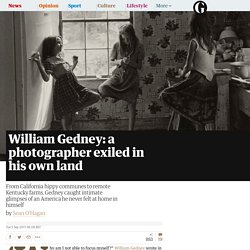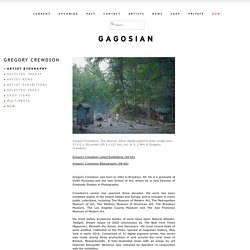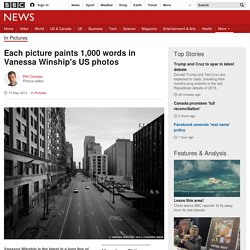

The Legacy of Rodney Smith Continues to Grow with Smithsonian Event. Appreciation for the work of acclaimed photographer Rodney Smith continues to grow.

His whimsical photographs, sometimes compared to the work of Surrealist painter Magritte, have long been a favorite for a select group of magazine editors, museum curators, and photography aficionados. Nearly two years after his untimely passing, Smith’s wife and creative partner Leslie Smolan continues to educate the public about his life and work. Smolan, who serves as executive director of the Rodney Smith Estate, is helping build the legacy of Smith. Recently, she had the opportunity to present his work at an event organized by Smithsonian Associates and Anthony Wilder in Washington, D.C.
Throughout the course of the evening, Smolan gave details about Smith and his work that only an insider could know. “The great irony about Rodney is that his pictures look the exact opposite of how he felt,” Smolan recounted. Smolan and Smith met in 1987. “Rodney always felt drawn to a photograph. Related Articles:
William Gedney: a photographer exiled in his own land. ‘Why am I not able to focus myself?”

William Gedney wrote in his journal on 21 January 21 1962. “I have the talent, I love to create, yet why do I waste most of my time, my days, now years in meaninglessness?” Given his prodigious output – he left 60,000 items in his archive to Duke University, North Carolina, including thousands of prints, countless journals and several unpublished books – this critical self-questioning seems absurd. And yet Gedney, the quiet man of American post-war documentary photography, always seemed acutely concerned that his work might not receive the attention it deserved.
Forty-five years on, he remains an undervalued presence in the history of American documentary photography, still relatively unknown. A new book, William Gedney: Only the Lonely, 1955–1984, may help elevate Gedney to his rightful place in the pantheon. The family in question were the Cornetts: husband Willie, who had just lost his job as a coal miner, his wife Vivian and their 12 children.
Brett Weston. Brett Weston seemed destined from birth to become one of our greatest American photographic artists.

Born in Los Angeles in 1911, the second son of photographer Edward Weston, he had perhaps the closest artistic relationship with his famous father of all four of the Weston sons. In 1925, Edward removed Brett from school and took him to Mexico, where the thirteen year old became his father's apprentice. Surrounded by revolutionary artists of the day, such as Tina Modotti, Frida Kahlo and Diego Rivera, and influenced as well by the striking contrast of life in Mexico, it was there that Brett first began making photographs with a small Graflex 3 1/4" x 4 1/4" camera. The introduction to modern art the younger Weston received, via the work of painters Rivera and Jose Clemente Orozco. unquestionably influenced his sense of form and composition.
A quality of design was evident in Brett's early images of the organic and man-made.
Francesca Woodman. Gregory Crewdson. Gregory Crewdson, The Haircut, 2014, digital pigment print, image size: 37 1/2 × 50 inches (95.3 x 127 cm), ed. of 3, 2 APs © Gregory Crewdson Gregory Crewdson Listed Exhibitions (49 Kb) Gregory Crewdson Bibliography (68 Kb) Gregory Crewdson was born in 1962 in Brooklyn, NY.

He is a graduate of SUNY Purchase and the Yale School of Art, where he is now Director of Graduate Studies in Photography. Crewdson’s career has spanned three decades. David Levinthal. PETER BEARD. Joni Sternbach Photography. Ralph Gibson - Home.
Vivian Maier. Each picture paints 1,000 words in Vanessa Winship's US photos. Vanessa Winship is the latest in a long line of illustrious photographers to document the lives and landscape found within the United States.

Having been honoured with the Henri Cartier Bresson Award, she spent more than a year travelling the country, crafting a series of pictures that reflect her response to the people and places visited. The result is a series entitled She Dances on Jackson. Like her previous work, these are quiet photographs that reveal themselves over time. There's no shock factor, or in-your-face lighting. The images offer subtle grey tones captured on black-and-white film, through the lens of her large format camera. The title is drawn from an encounter in Jackson, outlined by Winship in what amounts to the only text in the book that offers an insight into the work. Whilst waiting on a subway platform in Jackson, Winship was close to a group of two women and two girls, one of whom moves through a crowd that has gathered in front of a band and begins to dance.
Dennis Hopper. Documentary Photographer. Life. Mike Brodie. Minor White. William Klein. Edward Steichen Shadblow Tree. LARRY CLARK: “Tulsa – An Essay by Larry Clark” (1971. Index. Elliot Erwitt. Alfred Stieglitz. Richard Avedon. Jeff Dunas. Lisette Model. Lee Friedlander. Duane Michals. Ansel Adams. Weegee. Margaret Bourke-White. James Nachtwey. Irving Penn. Walker Evans. Robert Mapplethorpe. Diane Arbus. Larry Clark. Leica Portrait: Joel Meyerowitz. Robert Frank.